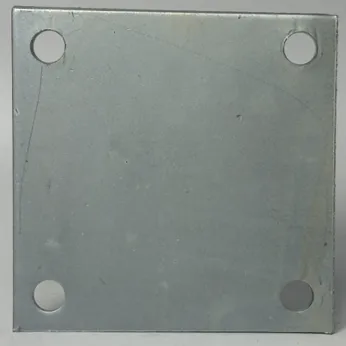loading...
- No. 9, Xingyuan South Street, Dongwaihuan Road, Zaoqiang County, Hengshui, Hebei, China
- admin@zjcomposites.com
- +86 15097380338
- Welcome to visit our website!
activated carbon filter vessel
Understanding Activated Carbon Filter Vessels A Comprehensive Guide
Activated carbon filter vessels play a vital role in the purification processes across various industries, including water treatment, air filtration, and even in specific industrial applications. These vessels utilize the unique properties of activated carbon to remove contaminants, odors, and impurities, ensuring that the output is clean and safe for consumption or further processing. In this article, we will explore the fundamental principles of activated carbon filter vessels, their applications, and best practices for maintenance and operation.
What is Activated Carbon?
Activated carbon is a form of carbon that has been processed to create a vast network of tiny pores, resulting in a large surface area. This increased surface area gives activated carbon the ability to adsorb various types of impurities effectively. Adsorption is the process through which molecules adhere to the surface of the carbon, allowing for a wide range of contaminants to be captured, including organic compounds, chlorine, volatile organic compounds (VOCs), and certain heavy metals.
The Structure of Activated Carbon Filter Vessels
An activated carbon filter vessel typically consists of a cylindrical container filled with activated carbon media. The vessel is designed to facilitate the flow of the target fluid—be it air or water—through the carbon. The design ensures that contaminants come into contact with the carbon, allowing for maximum adsorption as the fluid passes through. These vessels may feature multiple layers of different filtration media depending on the specific application and the nature of contaminants being removed.
Applications of Activated Carbon Filter Vessels
1. Water Treatment In water treatment plants, activated carbon filter vessels are commonly used to remove chlorine, sediment, and heavy metals, providing clean drinking water. They are also effective in removing pesticides and herbicides from agricultural runoff, making them crucial for environmental protection.
2. Air Filtration Activated carbon vessels are often used in HVAC (heating, ventilation, and air conditioning) systems to improve indoor air quality. They effectively capture odorous compounds as well as harmful VOCs emitted from various sources within buildings, such as paints and cleaning products.
activated carbon filter vessel

3. Industrial Processes Many industries employ activated carbon filters to eliminate impurities from gases and liquids in chemical processing, food and beverage production, and pharmaceutical manufacturing. This ensures product quality and compliance with health and safety regulations.
Operation and Maintenance
To ensure optimal performance from activated carbon filter vessels, regular maintenance is essential. This includes frequent monitoring of flow rates and the condition of the carbon media. Over time, the activated carbon can become saturated with contaminants, leading to reduced filtration efficiency. It is crucial to replace or regenerate the activated carbon according to the manufacturer’s guidelines or based on operational parameters.
Pre-filtration may also be beneficial. Depending on the application, pretreatment options like sediment filters can help prolong the lifespan of the carbon by reducing the load of larger particles and contaminants.
Choosing the Right Activated Carbon Filter Vessel
When selecting an activated carbon filter vessel, several factors must be considered
- Flow Rate The vessel must be suitable for the specific flow rate required by the application. - Size and Scale Consideration should be given to the scale of operation—industrial systems may require larger, more robust vessels compared to residential systems. - Contaminant Type Understanding the specific contaminants present helps in choosing the right type of activated carbon, as different grades are designed for varying applications.
Conclusion
Activated carbon filter vessels are essential tools for achieving effective filtration in both residential and industrial applications. By harnessing the power of activated carbon, these vessels help improve the quality of air and water, contributing to healthier living environments and efficient industrial processes. Proper operation and maintenance of these systems will ensure they continue to function at peak performance, effectively protecting both human health and the environment.
-
The Rise of FRP Profiles: Strong, Lightweight, and Built to LastNewsJul.14,2025
-
SMC Panel Tanks: A Modern Water Storage Solution for All EnvironmentsNewsJul.14,2025
-
GRP Grating: A Modern Solution for Safe and Durable Access SystemsNewsJul.14,2025
-
Galvanized Steel Water Tanks: Durable, Reliable, and Ready for UseNewsJul.14,2025
-
FRP Mini Mesh Grating: The Safer, Smarter Flooring SolutionNewsJul.14,2025
-
Exploring FRP Vessels: Durable Solutions for Modern Fluid HandlingNewsJul.14,2025
-
GRP Structures: The Future of Lightweight, High-Performance EngineeringNewsJun.20,2025
